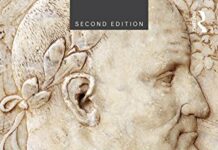
Ebook Info
- Published: 2010
- Number of pages: 376 pages
- Format: PDF
- File Size: 38.31 MB
- Authors: Barbara Levick
Description
Throughout a long and spectacularly successful political life, the Emperor Augustus (63BC-AD14) was a master of spin. Barbara Levick exposes the techniques which he used to disguise the ruthlessness of his rise to power and to enhance his successes once power was achieved.There was, she argues, less difference than might appear between the ambitious youth who overthrew Anthony and Cleopatra and the admired Emperor of later years. However seemingly benevolent his autocracy and substantial his achievements, Augustus’ overriding purpose was always to keep himself and his dynasty in power. Similar techniques were practised against surviving and fresh opponents, but with increasing skill and duplicity, and in the end the exhausted members of the political classes were content to accept their new ruler. This book charts the stages of Augustus’ rise, the evolution of his power and his methods of sustaining it, and finally the ways in which he used artists and literary men to glorify his image for his own time and times to come. This fascinating story of the realities of power in ancient Rome has inescapable contemporary resonance and will appeal equally to students of the Ancient World and to the general reader.
User’s Reviews
Editorial Reviews: From the Back Cover Throughout a long and spectacularly successful political life, the Emperor Augustus (63BC-AD14) was a master of spin. Barbara Levick exposes the techniques which he used to disguise the ruthlessness of his rise to power and to enhance his successes once power was achieved. There was, she argues, less difference than might appear between the ambitious youth who overthrew Anthony and Cleopatra and the admired Emperor of later years. However seemingly benevolent his autocracy and substantial his achievements, Augustus’ overriding purpose was always to keep himself and his dynasty in power. Similar techniques were practised against surviving and fresh opponents, but with increasing skill and duplicity, and in the end the exhausted members of the political classes were content to accept their new ruler. This book charts the stages of Augustus’ rise, the evolution of his power and his methods of sustaining it, and finally the ways in which he used artists and literary men to glorify his image for his own time and times to come. This fascinating story of the realities of power in ancient Rome has inescapable contemporary resonance and will appeal equally to students of the Ancient World and to the general reader. Barbara Levick is Emeritus Fellow and Tutor in Literae Humaniores at St. Hilda’s College, Oxford and the author of numerous works on the history of Ancient Rome. About the Author Barbara Levick is Fellow and Tutor Emeritus, St. Hilda’s College, Oxford. She has published extensively on Roman history, with titles including Tiberius the Politician (Routledge, 1999), Vespasian (Routledge, 1999), Claudius (Routledge, 2001) The Government of the Roman Empire, second edition (Routledge, 2001) and Julia Domna: Syrian Empress (Routledge, 2007).
Reviews from Amazon users which were colected at the time this book was published on the website:
⭐Great!
⭐Barbara Levick has written biographies of several imperial figures and they are usually very good, but I wasn’t convinced by this one. The interpretive paradigm, that Augustus was consistently driven by a desire for power, but changed and varied his approach like a chameleon (as Julian noted) was reasonable and well established.The narrative content was very thin indeed: there was never enough material/maps etc. to make this an accessible book for somebody wanting to track the triumvirate, the Varian disaster etc. unless they already knew those things and perhaps Levick is not expecting anybody to come to this without a solid background already: I will not be recommending this as extra reading to A-Level students though (except in short excerpts with maps etc. added).On the subject of maps the illustrations were a disaster. The Prima Porta Augustus is discussed with a picture so grainy (p.255) it is hard to know what value it serves; coins are rarely illustrated; the Boscoreale cup is grainy, etc. etc. Perhaps colour plates are expensive, but I can photocopy better than that as a handout in school.The choice of vocabulary is very dense (ashlar? Cynosure? I read bits with Google on standby – as I did to look at the images Levick discusses) and the sentences use colons and semicolons to create impenetrability.There are also some odd omissions. Levick has written on imperial women, but Livia is never a focus. Even when searching for any hints of Augustus’ psychology, the fact he never divorced a wife who did not produce an heir when that was a focus of his principate, and the implications of that was never discussed.I liked Levicks’s Tiberius; this is not nearly so good.
⭐
Keywords
Free Download Augustus: Image and Substance 1st Edition in PDF format
Augustus: Image and Substance 1st Edition PDF Free Download
Download Augustus: Image and Substance 1st Edition 2010 PDF Free
Augustus: Image and Substance 1st Edition 2010 PDF Free Download
Download Augustus: Image and Substance 1st Edition PDF
Free Download Ebook Augustus: Image and Substance 1st Edition



